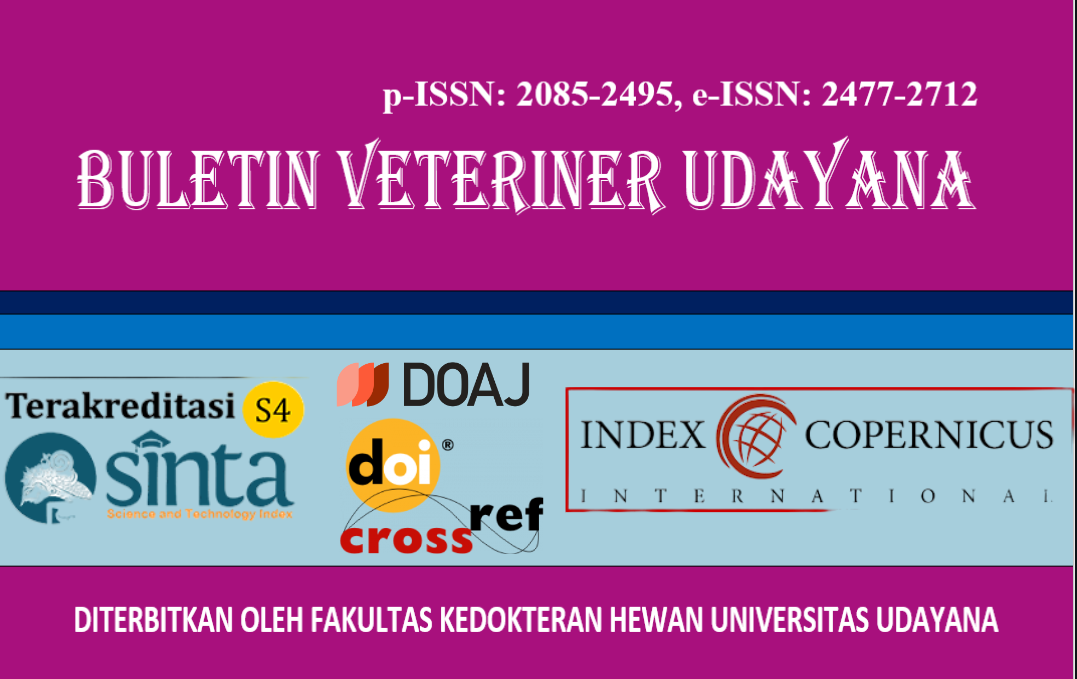HISTOLOGICAL AND HISTOMORPHOMETRIC ANALYSIS OF THE VENTRICULUS IN BALINESE DUCKS DURING THE STARTER PHASE
DOI:
https://doi.org/10.24843/bulvet.2025.v17.i04.p38Keywords:
bali duck, histology, histomorphometry, ventriculusAbstract
Bali ducks are a source of wealth and genetic resources originating from Bali. This study aims to determine the histological and histomorphometric structure of the ventriculus of bali ducks in the starter phase. The samples used consisted of 15 male Bali ducks and 15 female bali ducks aged 1 day, 14 days, 28 days, 42 days, and 56 days. The histological structure was examined using a binocular light microscope, and histomorphometry was measured using the ImageJ application and analyzed with the assistance of SPSS software. The results of this study showed that the histological structure of the bali duck ventriculus consists of the cuticle, mucosa, submucosa, and muscularis. The histomorphometric results indicated that the thickness of the cuticle increased from 153.884 μm to 387.559 μm, the mucosa increased from 420.448 μm to 779.638 μm, the submucosa increased from 56.634 μm to 260.631 μm, and the muscularis increased from 1010.344 μm to 2420.951 μm. The results of the study indicate that there are no differences in anatomical and histological structure in the bali duck ventricle. However, there are histomorphometric differences in the bali duck ventricle at 1 day, 14 days, 28 days, 42 days, and 56 days of age.




